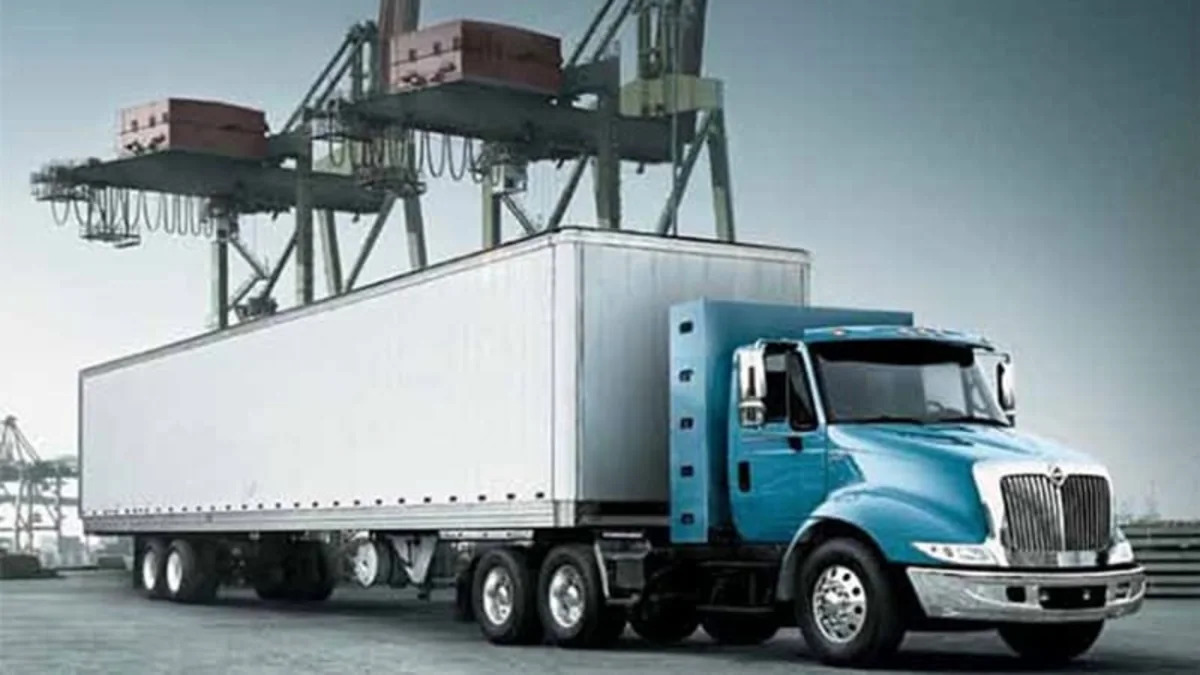The electric vehicle market is turning into a financial nightmare for many of the automakers and suppliers that invested in the technology. Hybrids only comprise three percent of total new car sales, despite there being over 40 different models. And fuel cells are still more science lab experiment than mass-production reality.Fleets can save well over $150,000 in fuel costs over the six-year life of a truck.
But in a different part of the market, the green revolution looks a lot more promising. Commercial truck fleets in the United States are now keenly interested in converting their trucks to nun on natural gas or propane.
Thanks to the precipitous drop in prices for compressed natural gas (CNG) and liquid propane (LPG), fleets can save a fortune by switching over to these fuels. OEMs such as Freightliner and Thomas Built Bus have jumped into the market. International now offers the Transtar Class 8 semi (above) that runs on CNG. A cost calculator on the truck maker's website shows that a fleet can save well over $150,000 in fuel costs over the six-year life of a truck. For fleets that run their per-mile operating costs to the penny, this is a financial windfall.
Unfortunately, for now, LPG and CNG don't make much sense for American drivers. There is only one mass-produced passenger car available in the US, the Honda Civic Natural Gas. Plus, there simply aren't enough fueling stations to accommodate us. But it's a different story for truck fleets, especially those that constantly run the same routes and return to the same yard every night. Some fuel suppliers will even provide them with a fueling station for free, sort of like getting a phone for free, but having to pay for the minutes.Natural gas prices are typically $1.50/gallon-equivalent cheaper than gasoline and $2 cheaper than diesel.
LPG used to sell well in the US. In 1980 there were about 600,000 vehicles that ran on propane. But as gasoline and diesel prices fell in the 1980s, the financial advantage disappeared and so did that market. But today's natural gas prices are typically $1.50 a gallon-equivalent cheaper than gasoline and $2 cheaper than diesel. And that leads proponents to predict there could be one million commercial vehicles running on natural gas far sooner than President Obama gets to his goal of one million electric vehicles on the road.
Ford, General Motors and Chrysler now offer commercial trucks that can run on these fuels. Ford is the most bullish, offering 10 different models. It charges $325 to add harder valves and valve seats so a truck engine can accommodate CNG or LPG, but a customer must spend an additional $10,000 or so to add the tanks and fuel system. Even so, for many fleets, which can easily put 100,000 miles on the odometer a year, the payback only takes two years. Ford says its sales of these vehicles, while still small, have shot up 350 percent since 2009.Ford says its sales of these vehicles have shot up 350 percent since 2009.
Natural gas and propane in gaseous form hold less energy than gasoline or diesel, but by using liquid natural gas (LNG) or liquid propane, trucks can pack much more fuel into a tank. Also, new fuel injection systems inject the fuel into the engine in liquid form, not gaseous, providing similar power and driveability to gasoline or diesel. LPG has a 105 octane rating, CNG is at 130. So far, none of the OEMs are modifying their engines to take advantage of this octane boost, so there could be further efficiencies.
Depending on the duty cycle, these trucks emit 20-30 percent fewer greenhouse gasses than their gasoline or diesel counterparts, so there is a significant environmental benefit to using them. Plus, they are mostly made of hydrogen, so they're a great first step towards building a hydrogen infrastructure.They emit 20 to 30 percent fewer greenhouse gasses than their gasoline or diesel counterparts.
The federal government offers a 50-cent tax credit for every gallon-equivalent used, plus up to $30,000 towards the cost of installing a fueling station. But the fleets still get the substantial savings cited above even without these credits, so there's little danger the market would collapse even if the federal incentives disappeared during any budget debate.
So which is it going to be, CNG or LPG? LPG, which is now extracted from natural gas, offers significantly lower initial costs. Since it is stored at a relatively low 250-300 psi, the conversion cost per truck is several thousand dollars lower. And LPG fueling stations are significantly cheaper to install-about $50,000 compared to $400,000 for CNG, which is stored at 3,600 psi.LPG, which is now extracted from natural gas, offers significantly lower initial costs.
But big oil companies such as ExxonMobil and Shell are making major plays in CNG, and it enjoys marquee backing from big names like billionaire investor T. Boone Pickens. LPG, by comparison, is largely supported by smaller energy companies without the marquee names.
Outside the US there's no comparison, LPG, commonly called autogas, is far more popular. It is the third most common fuel in the world, after gasoline and diesel. There are roughly 17 million vehicles running on LPG worldwide, mainly in Poland, Russia, South Korea, Turkey and Europe.LPG is also the third most common fuel in the world, after gasoline and diesel.
But fracking is an American innovation. This is where the prices have tumbled and are likely to stay under petroleum prices for decades to come. So we're likely to catch up quickly with the rest of the world because the savings are simply too big to ignore.


Sign in to post
Please sign in to leave a comment.
Continue